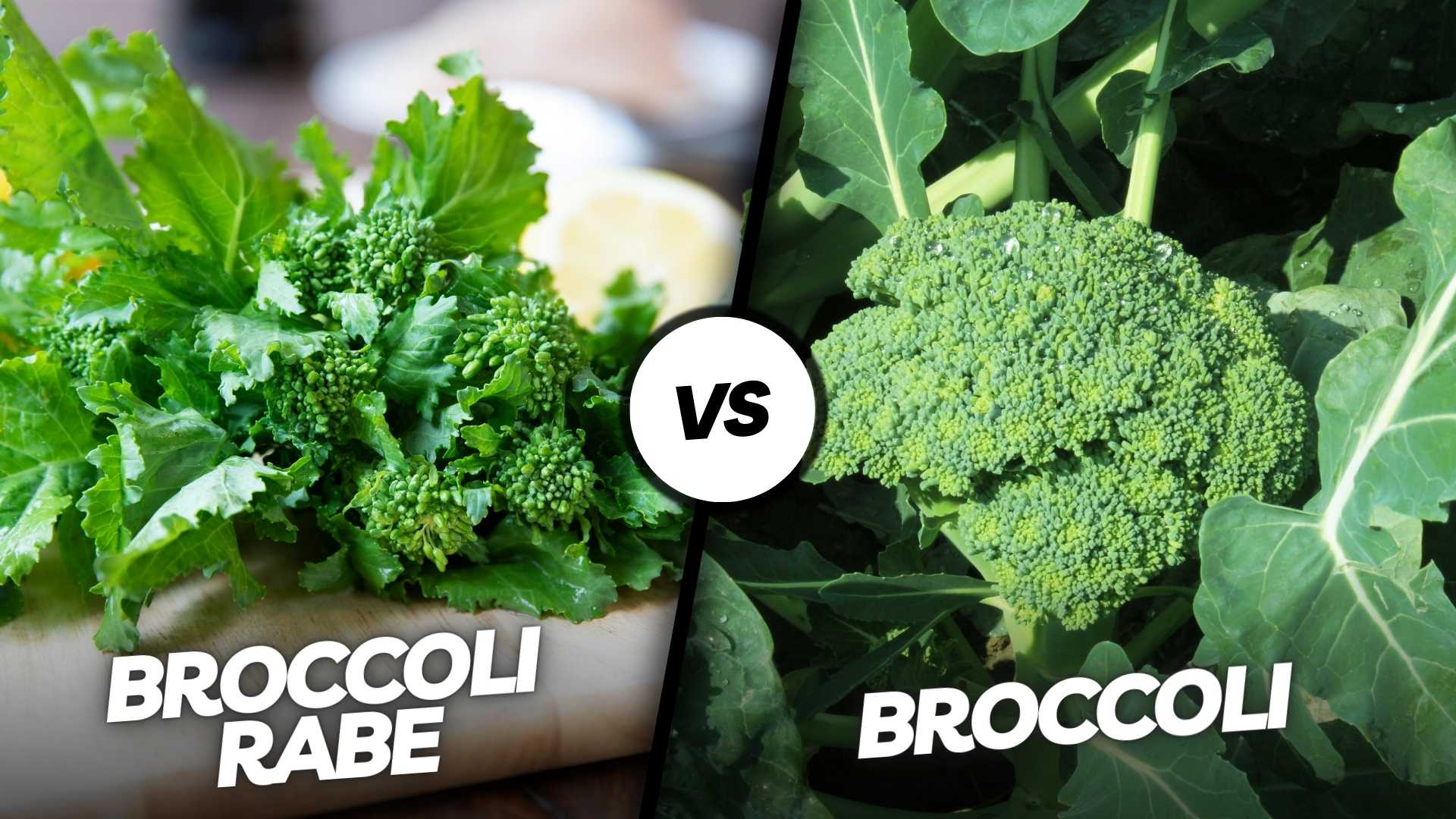When it comes to green vegetables, broccoli, and broccoli rabe are two of the most popular options. While they may look similar at first glance, there are some key differences between the two, both in terms of taste and nutritional value. This article will provide a detailed comparison of broccoli rabe and broccoli, examining their nutritional content, flavor profiles, culinary uses, growing and harvesting processes, and availability and cost.
By the end, readers will have a better understanding of the similarities and differences between these two nutritious vegetables and will be able to make more informed decisions about incorporating them into their diets.
Comparison of Broccoli Rabe vs Broccoli
Nutrition Comparison
Both broccoli rabe and broccoli are nutrient-dense vegetables that can provide a wide range of health benefits. Broccoli is particularly known for its high vitamin C content, as well as its significant amounts of vitamin K, vitamin A, folate, and fiber. Meanwhile, broccoli rabe is rich in vitamins A, C, and K, as well as iron, calcium, and potassium. It also contains a group of beneficial plant compounds called glucosinolates, which have been linked to cancer prevention and other health benefits.
In terms of macronutrient content, broccoli rabe has slightly more calories and protein than broccoli, as well as more fat and carbohydrates. However, both vegetables are low in calories and high in fiber, making them great options for weight loss and digestive health.
Taste and Culinary Uses
Broccoli rabe and broccoli have distinct flavor profiles that make them well-suited for different types of dishes. Broccoli has a mild, slightly sweet taste that pairs well with a variety of flavors. It can be steamed, roasted, stir-fried, or eaten raw in salads. Broccoli rabe, on the other hand, has a more bitter, pungent taste that can take some getting used to. It is often blanched or boiled before being sautéed with garlic and olive oil, and is commonly used in Italian cuisine.
Both vegetables are highly versatile and can be used in a variety of dishes, from pasta to stir-fries to soups. Broccoli can also be eaten as a snack, either raw or steamed and topped with seasonings.
Growing and Harvesting
Broccoli and broccoli rabe are both cool-season vegetables that grow best in moderate temperatures. They can be grown from seed or transplanted seedlings, and require well-drained soil and consistent moisture. Broccoli rabe tends to be more sensitive to heat and drought than broccoli, and may bolt if exposed to too much stress.
Broccoli is typically harvested when the central head is fully developed but before the buds begin to open. After the main head is harvested, smaller side shoots will continue to grow and can be harvested over a period of several weeks. Broccoli rabe is typically harvested when the plants are young and the leaves are tender, although some varieties can be harvested later when the flowers begin to form.
Availability and Cost
Broccoli is a widely available vegetable that can be found in most grocery stores and supermarkets throughout the year. Broccoli rabe, on the other hand, is less commonly available and may be harder to find, depending on where you live. It is more commonly found in specialty food stores and farmers markets, particularly in areas with large Italian populations.
In terms of cost, broccoli is generally more affordable than broccoli rabe, although prices can vary depending on the season and location. Broccoli rabe may be more expensive due to its limited availability and higher production costs.
Broccoli Rabe vs Broccoli: Which One is Right for You?
Both broccoli rabe and broccoli are nutritious and delicious vegetables that can provide a range of health benefits. While they share some similarities, they also have distinct characteristics that make them better suited for certain dishes and diets.
When deciding which vegetable to eat, it’s important to consider factors such as taste preferences, nutritional needs, and availability. If you’re looking for a milder-tasting vegetable that can be used in a variety of dishes, broccoli is a great choice. It’s also a good source of vitamin C and other essential nutrients.
On the other hand, if you’re looking for a vegetable with a more complex, bitter flavor, as well as a higher concentration of certain nutrients like iron and calcium, broccoli rabe is worth considering. It’s particularly well-suited for Italian cuisine, but can also be used in a range of other dishes.
It’s also worth noting that both vegetables can be used in a wide range of diets, from vegan to paleo to low-carb. Broccoli is particularly well-suited for low-carb diets, as it’s low in carbohydrates and high in fiber, while broccoli rabe can be a good choice for those following a plant-based or Mediterranean-style diet.
Conclusion
Broccoli rabe and broccoli are both nutritious and delicious vegetables that can provide a range of health benefits. While they have some similarities, they also have distinct flavor profiles and nutritional content that make them better suited for different types of dishes and diets. By understanding the similarities and differences between these two vegetables, you can make more informed decisions about incorporating them into your diet and enjoying their many health benefits.
